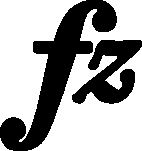



|
b. 5
|
composition: Op. 22, Polonaise
..
category imprint: Differences between sources issues: EE revisions , fz – f |
||||||||
|
b. 5-6
|
composition: Op. 22, Polonaise
..
In FE (→GE) the category imprint: Graphic ambiguousness; Differences between sources issues: EE revisions , Inaccuracies in GE , Scope of dynamic hairpins , GE revisions |
||||||||
|
b. 5
|
composition: Op. 50 No. 1, Mazurka in G major
..
The wedge in Afrag is probably the original version (or simply an inaccuracy). category imprint: Differences between sources |
||||||||
|
b. 5-6
|
composition: Op. 50 No. 1, Mazurka in G major
..
The slurs of Afrag and GE are unequivocal; since such a slur is featured in all analogous bars in GE, we give it – as present in [A2] – in the main text. The slur of FE is clearly erroneous, which was corrected in FE2 and EE, most probably on the basis of comparison with b. 1-2. The slur of A1 is problematic; just like the remaining slurs in the 1st line of the manuscript, it reaches the end of the bar, yet its shape suggests that it is supposed to be led to the beginning of the next bar. It is explicitly confirmed by the fact of ending the slur in b. 11 (on a new line) as well as by the unequivocal slur in b. 25-27, corrected by Chopin. In such a context, we interpret the slur of A1 as reaching the 1st quaver in b. 7. category imprint: Graphic ambiguousness; Differences between sources issues: EE revisions , Inaccuracies in FE , FE revisions , Uncertain slur continuation , Tenuto slurs |
||||||||
|
b. 5-6
|
composition: Op. 21, Concerto in F minor, Mvt III
..
Most accidentals before quavers are written lower than the corresponding noteheads. In this case it poses obviously no risk of a misunderstanding. category imprint: Source & stylistic information issues: Accidental below/above the note |

 in
in  in
in  (the remaining voices are devoid of dynamic markings here).
(the remaining voices are devoid of dynamic markings here). in
in 
